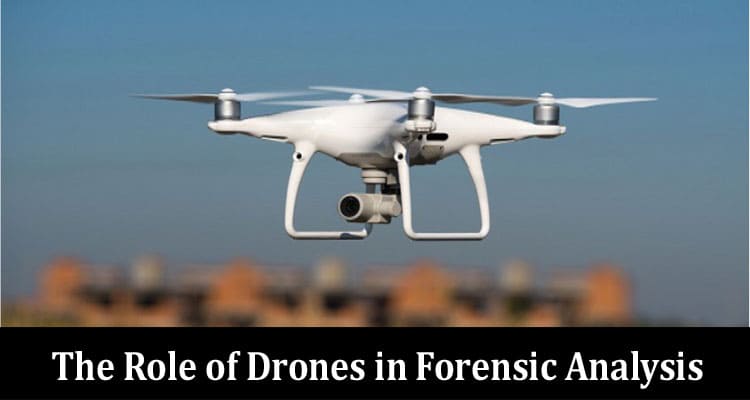Scene Investigation is a meticulous process akin to piecing together a detailed puzzle where every piece is essential to reveal the whole picture. Forensic analysis, traditionally, is marked by extensive manual labor, with investigators scanning crime scenes searching for clues that may elude the untrained eye. Enter drones—these advanced technological devices are revolutionizing forensic science by providing a unique perspective and efficient approach to scene investigations. This article explores the multifaceted role of police drones in forensic analysis, illustrating how they assist in aspects such as crime scene documentation, evidence collection, and more.
Enhancing Crime Scene Documentation
In the realm of forensic analysis, crime scene documentation is indispensable. It involves creating a comprehensive record of the scene, capturing every detail from the macro to the micro. With their aerial capabilities, police drones afford investigators a superior vantage point, allowing documentation of crime scenes from formerly inaccessible angles. The high-resolution images and videos collected by drones are instrumental in developing intricate crime scene reconstructions. Such reconstructions provide clarity and context to the spatial relations and dimensions of the scene, unveiling a new dimension to the complex tapestry of crime scene investigations. The aerial perspective offers enhanced visualization, ensuring that every detail, no matter how minute, is documented and analyzed thoroughly, providing investigators with more extensive data to solve crimes.
Swift Evidence Collection
Every moment is crucial in the delicate timeframe of a crime scene investigation. Drones are becoming invaluable in rapidly and efficiently scanning the surroundings and identifying potential evidence that might be overlooked from the ground level. The aerial perspective not only expedites the discovery of vital pieces of evidence but also ensures that each piece is documented and preserved in its untouched state, thus preventing contamination or loss. Such advanced technology acts as an auxiliary set of eyes, viewing things from a different dimension and amplifying the prospects of solving the intricate puzzles presented by crime scenes. It ensures the rapid acquisition of essential data, optimizing the workflow of forensic experts and enhancing the overall efficacy of crime scene investigations.
Unveiling the Hidden Dimensions
With the integration of sophisticated technologies like LiDAR, drones can formulate precise 3D maps of crime scenes. These maps reveal details that remain concealed to the naked eye. This intricate three-dimensional representation allows forensic experts to traverse every nook and cranny of a crime scene, examining and analyzing it with unparalleled precision. It transforms the crime scene into a meticulous 3D model, enabling investigators to revisit and reanalyze the scene as needed, uncovering details that might have been overlooked during initial investigations. Incorporating such advanced mapping technologies in forensic analysis adds depth to investigations, enhancing the ability to understand and interpret crime scenes with a higher degree of accuracy.
Terrain Accessibility
Many crime scenes are situated in terrains that pose significant accessibility challenges, such as dense forests, mountains, or bodies of water. The agile maneuverability of drones enables them to quickly access such locations, offering insights into areas that were once nearly impossible to investigate. This accessibility allows for gathering crucial data without disturbing the environment’s natural state or compromising investigators‘ safety. It acts as a handy explorer, delving into the unknown, bringing forth concealed truths, and shedding light on obscured details, thereby aiding in establishing comprehensive investigative reports and contributing to the eventual resolution of criminal cases.
Monitoring and Surveillance
In crime scene investigations, drones play a pivotal role in monitoring and surveillance. They can seamlessly hover over an area, silently documenting activities and interactions, often relaying real-time feedback to the investigators. This silent, invisible watcher can be instrumental in pinpointing suspicious behaviors, movements, or alterations to the scene, potentially providing essential insights into the truth behind the crime. It acts as a silent guardian, a watchful protector, chronicling every nuance, every whisper, delivering invaluable information that could be the linchpin in solving complex criminal investigations.
Enhanced Safety
Pursuing truth in forensic analysis often leads investigators into hazardous situations, including exposure to harmful substances or unstable structures. Drones, serving as protective shields, allow investigators to assess and analyze potentially dangerous environments from a safe distance. Equipped with an array of sensors, drones can detect the presence of harmful gases, radiation levels, or structural instability, alerting investigators to the potential risks. It becomes a protective companion, ensuring the safety of those seeking the truth allowing for meticulous assessment of crime scenes without compromising the investigators’ well-being.
Conclusion:
In the evolving landscape of forensic analysis, drones are emerging as transformative entities, reshaping the approach to scene investigations. They are the unobserved sentinels in the sky, offering unparalleled vantage points, facilitating swift evidence collection, revealing hidden dimensions with 3D mapping, overcoming terrain accessibility challenges, and serving as silent, watchful protectors. The technology extends the capabilities of forensic experts, enabling them to see the unseen, reach the unreachable, and uncover the obscured truths. As technology advances, the synergistic relationship between drones and forensic analysis is poised to uncover new horizons, rendering the world a bit more transparent and inherently more just. Using drones in forensic analysis signifies a monumental leap in the continual pursuit of truth, justice, and the resolution of the multifaceted puzzles presented by crime scenes.


